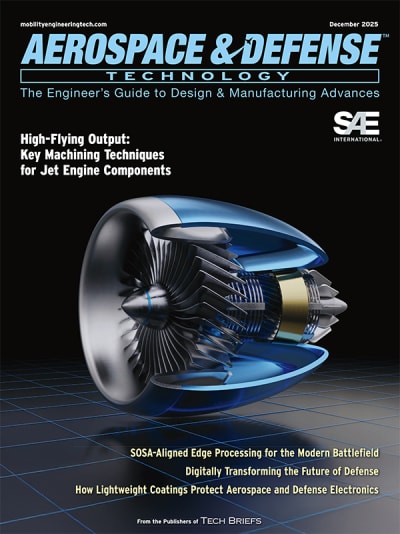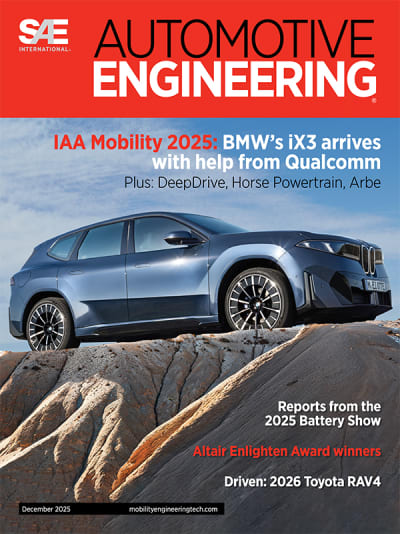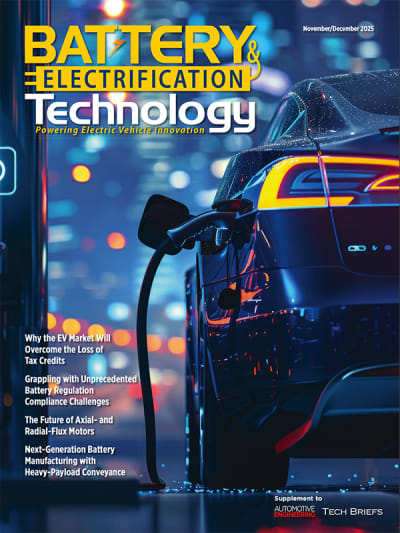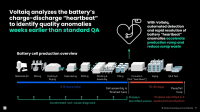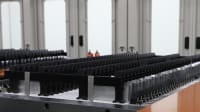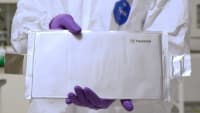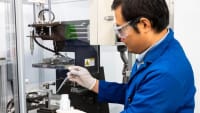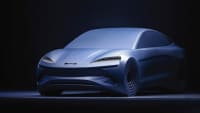New Products
Smart Charging Portable Kit

Intellias (Chicago, IL) has launched the “Smart Charging Portable Kit,” a comprehensive solution accelerator designed to address the most pressing challenges in the EV charging sector. The Smart Charging Portable Kit is an all-in-one solution accelerator designed to address key challenges such as interoperability, standardization, and scalability in the rapidly evolving EV charging landscape. Built on open-source platforms like LF Energy EVerest and leveraging open protocols such as the Open Charge Point Protocol (OCPP) and Open Charge Point Interface (OCPI), the kit enables seamless integration and communication across diverse EV charging networks. It aims to bridge gaps in the ecosystem by enhancing interoperability and standardization, crucial for a scalable and sustainable EV infrastructure. The kit addresses critical pain points for EV drivers, such as fragmented payment systems and lack of reliable information on station availability, wait times, and pricing. By simplifying payment integration and providing comprehensive data, the kit enhances the overall charging experience and boosts the reliability of the EV charging infrastructure, encouraging broader adoption among drivers, fleets, and mobility service providers.
Visit Here
Battery Testing Station
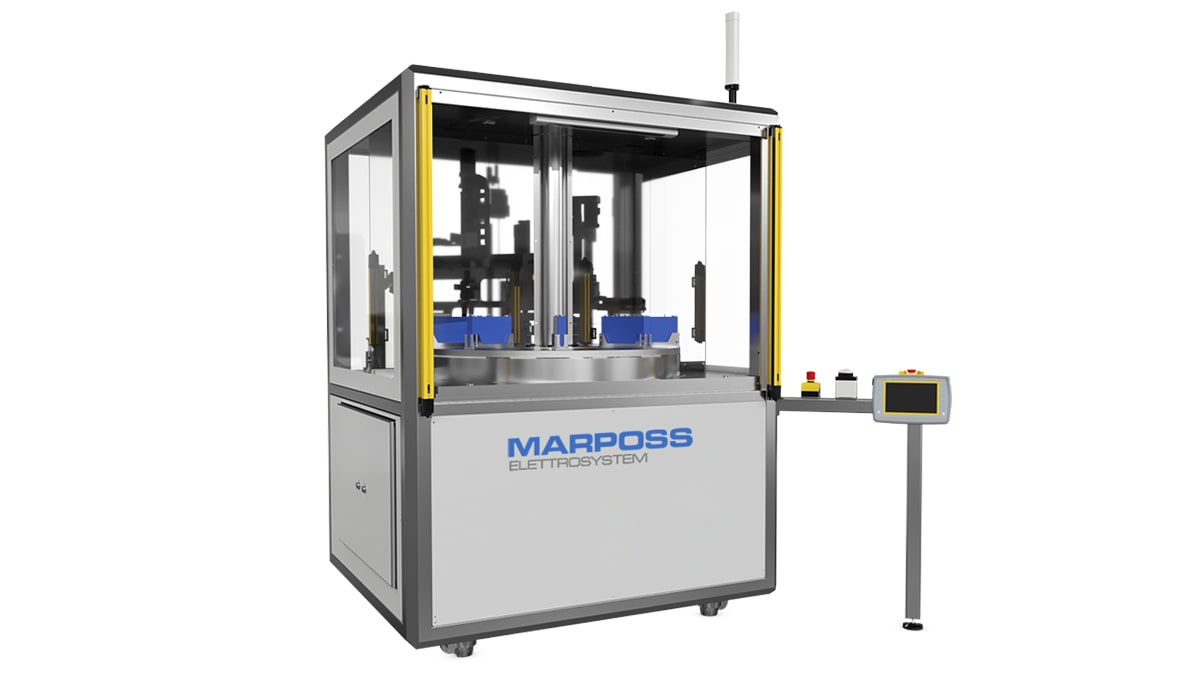
Marposs (Bentivogilo, Italy) provides complete solutions for testing prismatic battery cells. An extremely compact bench, predisposed to be used as a stand-alone testing station or to be automatically loaded by robot. It is a configuration particularly suitable for use in pilot lines, or for production lines with low-medium rates. Different solutions can be proposed for mass production. Being based on a turning table, the cells are loaded by an operator or an automatic system ensuring the safest working conditions. The arrangement of the cell nest is punctually determined, in terms of number and shape, according to specific cell model and size. After the identification of the cell, the preliminary measurement is the dimensional assessment. A dedicated gripper, actuated by a servocontrolled two-axis manipulator, acquires the thickness of the cell in different contact points along the body of the cell itself. Number and position of the measuring points can be freely programmed according to customer’s requirements. The main station is dedicated to the electrical testing, where pogo-pin device closes the circuit between anode and cathode with a controlled force. The last testing station is dedicated to check the perfect insulation of the external enclosure.
Visit Here
LMFP Cathode Active Material

A new Lithium Manganese Iron Phosphate (LMFP) cathode active material developed by Integrals Power (Keynes, U.K.) could increase the real-world range of EVs by extending the useable capacity of the battery under high discharge conditions. Conventional Lithium Iron Phosphate (LFP) chemistries experience a reduction in useable capacity when the battery is operated at high discharge conditions, such as prolonged periods of highway driving or in high-power applications such as electric mining vehicles. Tests carried out by testing and research company QinetiQ have demonstrated that the LMFP cells retain a significantly higher percentage of their nominal capacity than LFP under these conditions. The LMFP cells retained 99 percent of their original capacity at 2C (30 minutes discharge time), and 95 percent at 5C (12 minutes discharge time). Even at an extreme 10C (6 minutes discharge time), which is far beyond the limits of any use case, capacity retention was an impressive 60 percent. This demonstrates the material’s ability to deliver high performance without compromising durability - attributes essential to demanding applications such as EVs.
Visit Here
Advanced Battery Cell

Amprius Technologies, Inc. (Freemont, CA) announced a new SiCore™ cell as part of its expanding SiCore product platform. Designed to revolutionize high-performance electric mobility, the SiCore platform utilizes a proprietary silicon anode material system to deliver the best-known commercially available energy and power performance in one cell. The new SiCore cell offers power-to-energy capabilities for high-demand applications. With an impressive energy density of 370 Wh/kg, the SiCore cell extends runtimes while still delivering exceptional high-power performance exceeding 3000 W/kg. The cell’s advanced design supports high discharge rates of up to 10C without cooling and 15C with active cooling, ensuring quick power delivery without compromising runtime. This cutting-edge solution is expected to set new standards for applications operating in the most demanding conditions. The new SiCore cell is ideal for aviation, including drones, and high-performance electric vehicle applications that require both endurance and rapid energy delivery. The cell is expected to enable customers to achieve superior range, speed, and reliability. This advanced power delivery is especially critical for applications like eVTOL aircraft, where high power is essential for takeoff and landing, and high energy ensures extended flight times and longer ranges.
Visit Here
Top Stories
INSIDERLighting Technology
![]() Using Ultrabright X-Rays to Test Materials for Ultrafast Aircraft
Using Ultrabright X-Rays to Test Materials for Ultrafast Aircraft
INSIDERManufacturing & Prototyping
![]() New 3D-Printable Nanocomposite Prevents Overheating in Military Electronics
New 3D-Printable Nanocomposite Prevents Overheating in Military Electronics
INSIDERDefense
![]() F-22 Pilot Controls Drone With Tablet
F-22 Pilot Controls Drone With Tablet
Technology ReportAR/AI
![]() Talking SDVs and Zonal Architecture with TE Connectivity
Talking SDVs and Zonal Architecture with TE Connectivity
INSIDERManufacturing & Prototyping
![]() New Defense Department Program Seeks 300,000 Drones From Industry by 2027
New Defense Department Program Seeks 300,000 Drones From Industry by 2027
INSIDERAerospace
![]() Anduril Completes First Semi-Autonomous Flight of CCA Prototype
Anduril Completes First Semi-Autonomous Flight of CCA Prototype
Webcasts
Test & Measurement
![]() SAE Automotive Engineering Podcast: Additive Manufacturing
SAE Automotive Engineering Podcast: Additive Manufacturing
Information Technology
![]() A New Approach to Manufacturing Machine Connectivity for the Air Force
A New Approach to Manufacturing Machine Connectivity for the Air Force
Automotive
![]() Optimizing Production Processes with the Virtual Twin
Optimizing Production Processes with the Virtual Twin
Power
![]() EV and Battery Thermal Management Strategies
EV and Battery Thermal Management Strategies
Manufacturing & Prototyping
![]() How Packet Digital Is Scaling Domestic Drone Battery Manufacturing
How Packet Digital Is Scaling Domestic Drone Battery Manufacturing
Automotive
![]() Advancements in Zinc Die Casting Technology & Alloys for Next-Generation...
Advancements in Zinc Die Casting Technology & Alloys for Next-Generation...

